The Moscow Watchdog is a large service breed, bred by Soviet breeders by mating St. Bernard and the Caucasian Shepherd Dog.
Moscow watchdogs are professional guards, self-sufficient leaders, and fearless defenders, capable of turning an attacker to flight by sheer appearance. Serious and incorruptible, they will never leave their office and will guard the object entrusted to them to the last. At the same time, in an informal setting, “Muscovites” are easily transformed into calm, unassuming pets, who know how to get along with children and willingly join any game.
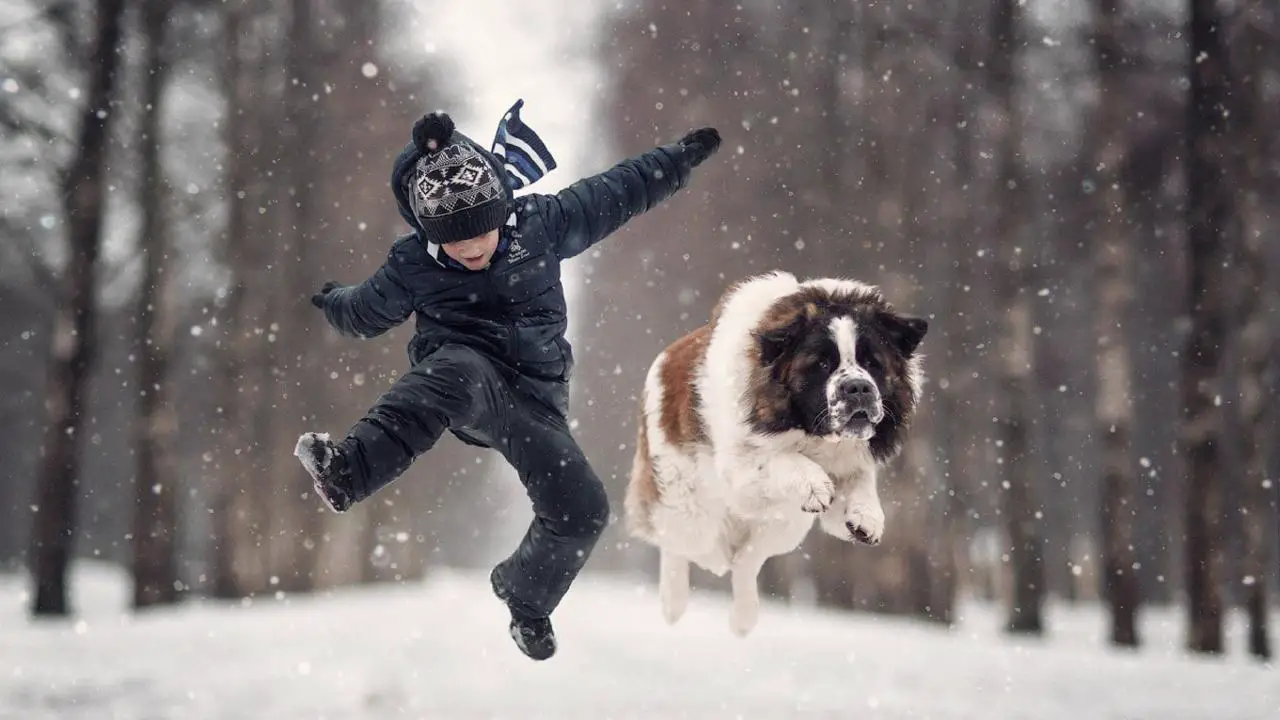
The breed owes its birth to the Soviet kennel “Krasnaya Zvezda” and an acute shortage of canine personnel caused by the Second World War. At the end of the 40s, the leadership of the military dog breeding school received a state order for breeding a dog that would combine the features of a guard and a protector and could serve in extreme climatic conditions. Even though the breeding base of the nursery at that time was extremely small and consisted mainly of trophy animals exported from Germany, Soviet breeders managed to accomplish the almost impossible. In just a few years, the kennel managed to breed and present to domestic dog handlers not one, but four breeds, including the Moscow Watchdog.
Initially, several canine families participated in the experiment to create the ideal service dog, including the Russian piebald hounds, East European shepherds, and St. Bernards. Well, the final touch to the development of the exterior and temperament of the Moscow guard dog was made by the Caucasian Shepherd Dogs. They began to interbreed with them the offspring obtained from the above breeds so that they would inherit the natural aggression of their parent.
The first “Muscovites” appeared at the exhibition already in 1950. Six animals – Joy, Despot, Don, Divny, Dido, and Dukat – were littermates and turned out to be quite capable dogs, although not devoid of external defects. In 1958, a separate standard of appearance was approved for the wards of the “Red Star”, but until 1985 the breed continued to be officially unrecognized in the USSR. As for foreign cynological associations, Moscow watchdogs are still dark horses for them. For this reason, it is possible to meet “Muscovites” these days only in the vastness of the CIS and occasionally in the Czech Republic and Poland, where single breeders are engaged in the breed.
An interesting fact: the colorful appearance of the Moscow watchdogs is the merit of Arslan, a dog who was born in the 60s and is considered the ancestor of the breed. The first “Muscovites” who took part in exhibitions in the 50s did not look so impressive.
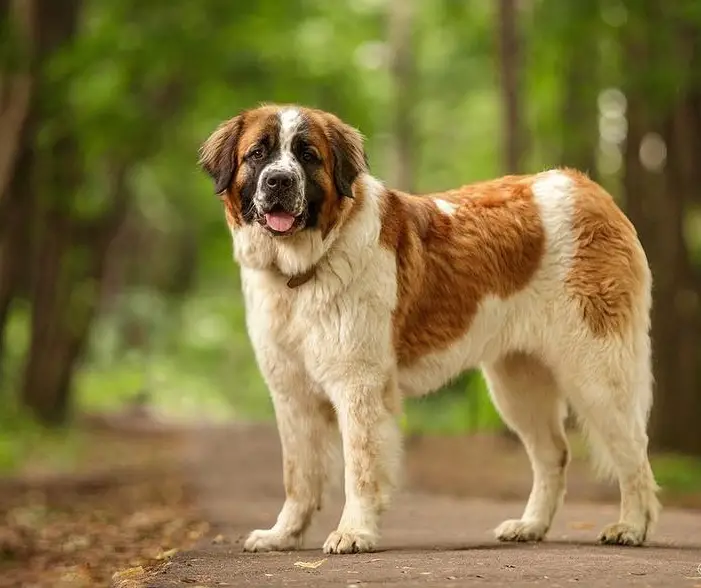
A formidable giant with the face of a St. Bernard and the shaggy hair of a “Caucasian” – roughly this impression is produced by the Moscow watchdog at the first meeting. By the way, despite the deceptive similarity between the Moscow watchdog and the “Alpine rescuers”, there are also quite significant differences between them. In particular, the wards of the “Red Star”, although they are considered giants among their own kind, are somewhat inferior in size to the “Swiss”. The minimum allowable weight for an adult male Moscow watchdog is 55 kg, for a St. Bernard – 70 kg. The skull of the MC is significantly narrower than that of its Alpine relative, and the transition from the forehead to the muzzle is relatively smooth. In addition, the “Muscovites” are distinguished by a more robust constitution and an elongated body, complemented by lightness and dexterity of movement, striking for such giants.
The head is large, cheeky, with a moderately arched, wide forehead, crossed by a longitudinal groove. The muzzle of the Moscow sentry is blunt and voluminous, noticeably shorter in length than the skull. The infraorbital region is normally filled, the superciliary arches and the occipital protuberance are distinctly expressed.
The “Muscovites” have fleshy lips of rich black color, without flews.
The jaws of the Moscow sentry are massive, with a scissor bite. White teeth in the amount of 42 pcs. fit snugly together. The incisors are aligned. The absence of several teeth, provided that they were broken or knocked out, is not considered a defect.
The purebred Moscow watchdog nose is black, very large, and noticeably elongated in width.
The deep-set, small eyes are tightly covered with black eyelids. The standard shade of the Moscow watchdog iris is black.
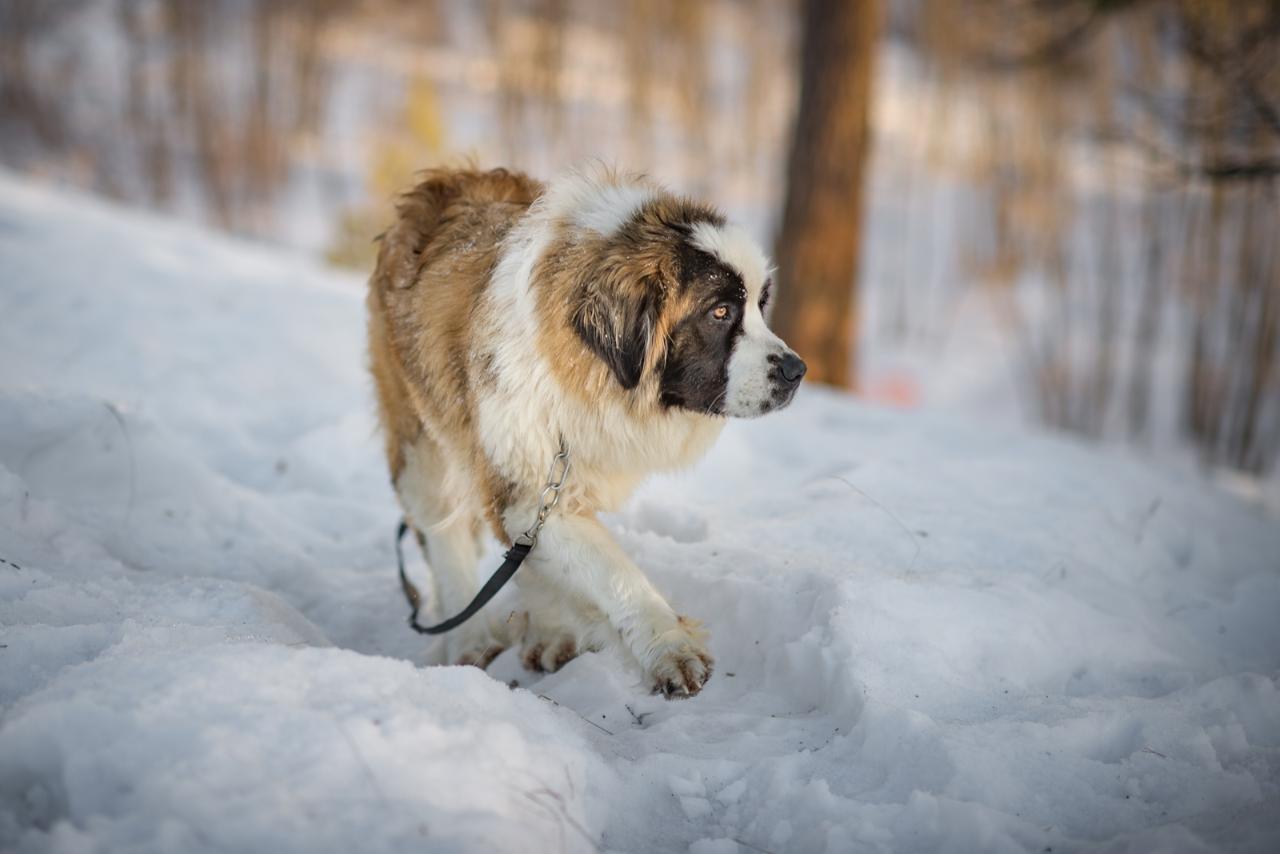
The correct shape of the ear is triangular, with a gently rounded tip, set above the level of the dog’s eyes. The cartilage keeps the ear surface in a hanging position so that the front edge of the ear touches the zygomatic zone.
The neck of the Moscow sentry is muscular, of medium length, with a well-developed nape and moderate dewlap. The latter may be absent in some individuals, which is not considered a disadvantage.
Unlike St. Bernards, the Moscow watchdogs boast a more stretched hull type. The withers of the “Muscovites” are high and especially striking in males. The back is strong, of good width, with a short loin and a voluminous, slightly sloping croup. The rib cage of the MC is deep, with convex hoops of ribs, expanding towards the croup. The lower abdomen line is slightly tucked up.
The “Muscovites” have straight, parallel legs. The shoulder blades are of sufficient length, set obliquely, the shoulders are well muscled. The thighs of the representatives of this breed have the same length as the shins. The dog’s paws are massive; the front ones are rounded in shape, with thick elastic pads, the back outlines are more reminiscent of an oval. The dewclaws of the animals are removed.
The tail of the Moscow watchdog continues the line of the croup and is distinguished by a decent thickness. In a relaxed animal, the trail drops down, forming a slight bend in the tip area, in an excited animal, it takes the shape of a crescent and rises above the back.
The coat of the Moscow sentry is plentiful, double, consisting of the guard hair and the thickest undercoat. The most stylish appearance is males, in which the decorating coat forms a spectacular collar on the neck and flirty feathering on the back of the legs. In females the Moscow sentry “outfit” is several times more modest because of the smaller amount of dressing hair.
White with red, reddish-black, black-reddish, or sable spots. Colors that do not have a red tint in any of the above variations are considered non-standard. In addition, the dog’s chest, the tip of the tail, and paws (front – to the elbow joint, hind – to the shins) should remain white on the dog. The head of the Moscow watchdog is framed by a black “mask”, complemented by the same “glasses”. The ears of the representatives of this breed are also black.
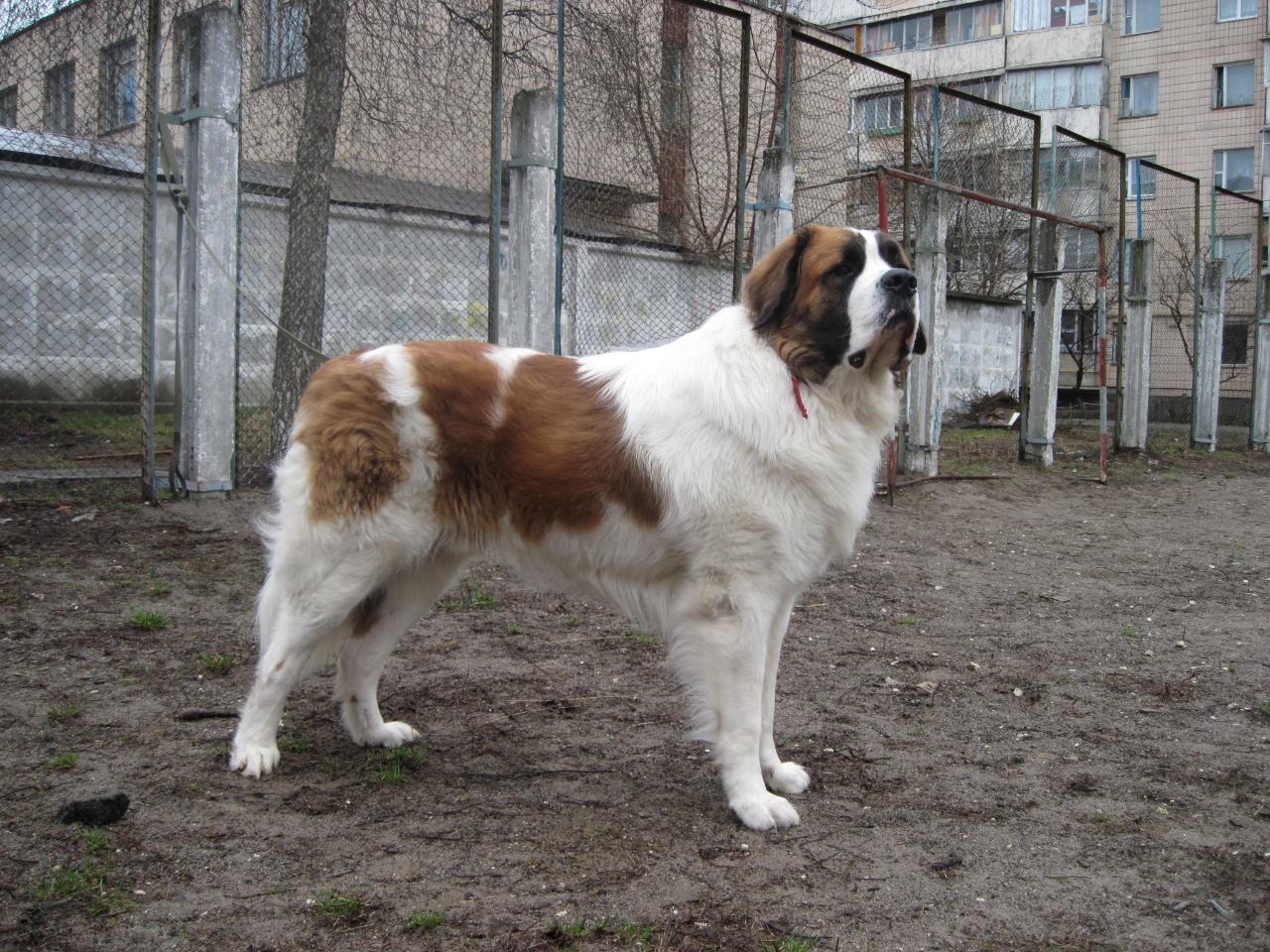
Disadvantages, which the animal will not receive a mark above “good” at the exhibition, are:
- an overly long neck with too much dewlap;
- ears in a semi-erect position;
- scanty tail curled into a ring or hook;
- too short shoulder blades;
- a narrow head with an overly smoothed or, conversely, a sharp stop;
- pendulous, pocket-like lips;
- the very light color of the iris, obliquely set eyes;
- insufficiently wide set of legs;
- the proximity of the hock joints;
- curly and frizzy coat (light wave is permissible);
- square case;
- asymmetrical color of the muzzle;
- insufficient growth.
Moscow watchdogs with the following physical and mental disabilities are subject to full disqualification:
- nervousness, cowardice;
- congenital incomplete teeth (broken and knocked out teeth do not count);
- amble;
- the brown color of the eyelids and lobes;
- skewed jaw;
- malocclusion;
Dogs with dewclaws, cryptorchidism, and unbalanced, loose movements are also rejected.
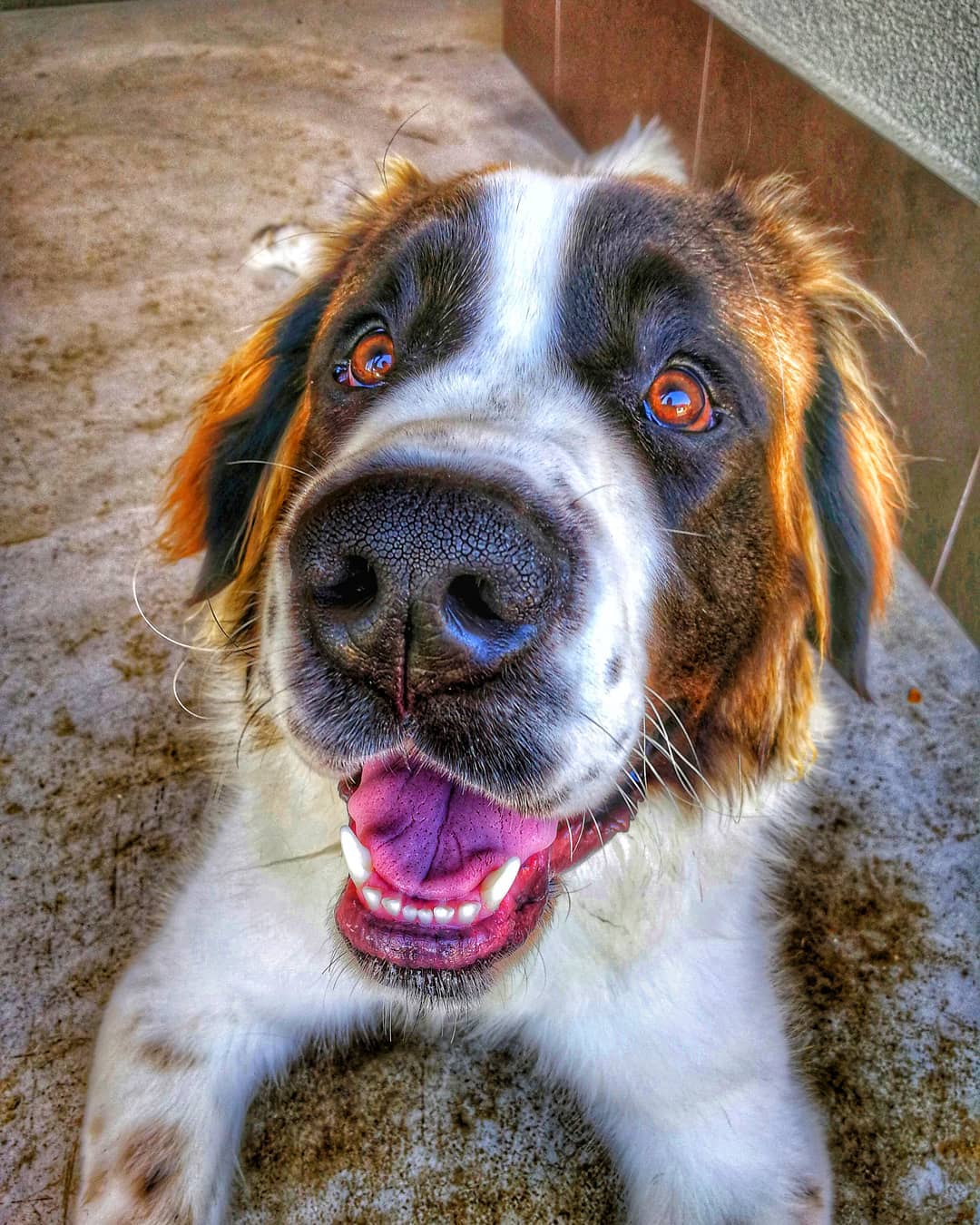
The calculation of the Krasnaya Zvezda specialists that their pets will inherit the aggression and impulsiveness of the Caucasian wolfhounds was only partially justified. Yes, the Moscow sentries are brave and courageous, but by no means evil and certainly not reckless. The dog will come into conflict with anyone only when the enemy clearly demonstrates his own intentions. Yet the nature of the Moscow watchdog is largely determined by genes. In particular, individuals in which the blood of “Caucasians” predominates show great suspicion and ferocity. They are easy-going and much more suitable for the role of fearless bodyguards. Dogs that inherited the temperament of St. Bernard are noticeably more phlegmatic, therefore such Moscow watchdogs are often recommended for the role of family pets and guardians of the owner’s wealth.
Moscow watchdogs are not talkative and give voice only when necessary. If your shaggy giant grunted, then he really got sick. In the family, the dog behaves quite peacefully: the innate ability of “Muscovites” to become attached to people with whom they have to share a common territory is reflected. With children, the Moscow watchdog also does not have friction, however, provided that it is not by chance that these are neighbors’ kids who have run in. A properly raised animal will look at such guests with at least indifference, and even with frank discontent.
On the Internet, you can find a lot of video evidence that the Moscow watchdogs turn out to be hyper-responsible nannies. But in reality, not everything is so simple. Of course, the “Muscovite” will gladly ride your heirs on a sled, play catch-up with them, and even try to forgive them for petty pranks, but you shouldn’t leave for a long time and leave unintelligent kids for such a giant. As an example: an accidental flick of the tail of this shaggy security guard can knock a three-year-old mischievous person off his feet.
Moscow watchdogs treat each family member equally. They do not divide households into favorites and episodic characters and try to listen to each of them. But this does not mean that the MC is not able to guess who is in charge in the house. Quite the opposite – a pet living in a family is always aware of who has the right to have the last word.
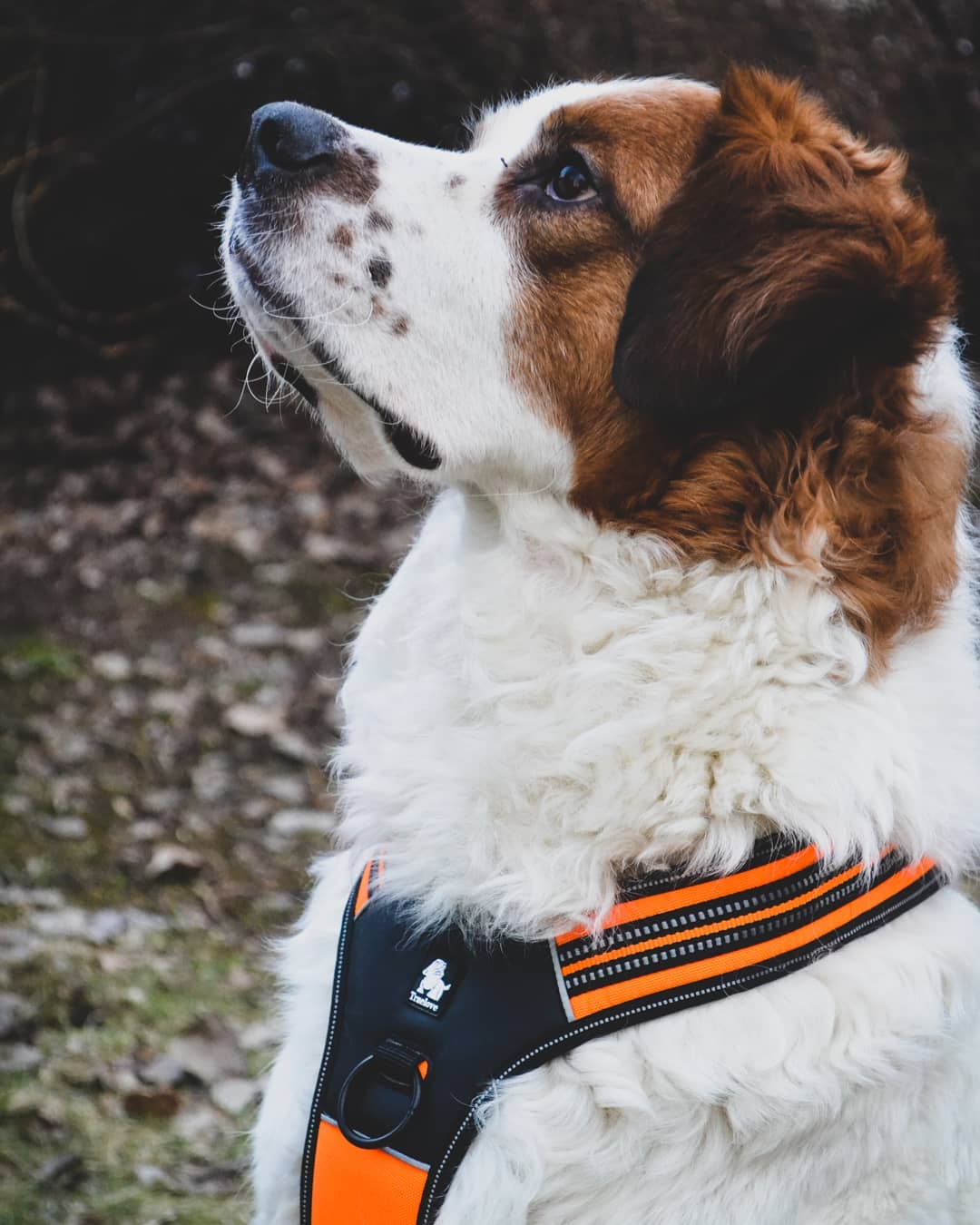
A guard dog is a test of the owner’s coaching and leadership qualities. Even the most balanced and obedient “Muscovites” are not averse to playing alpha males and wiping their paws on the master’s authority. So from the very first days of a young shaggy person in your home, approve a system of permissions and strict prohibitions and do not deviate from the set course until the pet matures.
Usually, Moscow watchdogs begin to show character at the age of 6 months. In particular, adolescents may deliberately not respond to food calls or grumble and snap back at command. In such cases, the method that mothers of puppies themselves often use will be effective. The recalcitrant violator of discipline knocks off his feet, rolls over onto his side, and is forcibly held in a supine position until he thinks over his own behavior and calms down.
Do not under any circumstances show an older puppy that you are intimidated by his massive jaws. Moscow Watchdogs are quick-witted and will quickly understand that they have “outgrown” your authority. Teasing and provoking a dog by trying to train it as a watchdog is also not the best technique. If you regularly try to take away a toy or food from the MC, get ready for such anti-bonuses as anger and nervousness.
There are subtleties in the use of commands. So, for example, the call “Come to me!” is not used when the trainer is about to punish the pet. Not a single dog will voluntarily come up for the “distribution of gingerbread”, let alone the Moscow watchdog, even more so. Ban “Fu!” is pronounced in a categorical, threatening tone so that the “Muscovite” does not have a desire to test the owner’s patience. Owners bringing up the future participant of exhibitions will need the Show Teeth! Commands. and “Near!”
It is worth considering attending a ZKS course for your dog if you see a future bodyguard in your pet. If the candidacy of the Moscow watchdog is considered to be a family friend or guardian, you can limit yourself to home training. True, it should be dealt with by an adult with a strong character, who has an idea of the psyche and temperament of the breed.
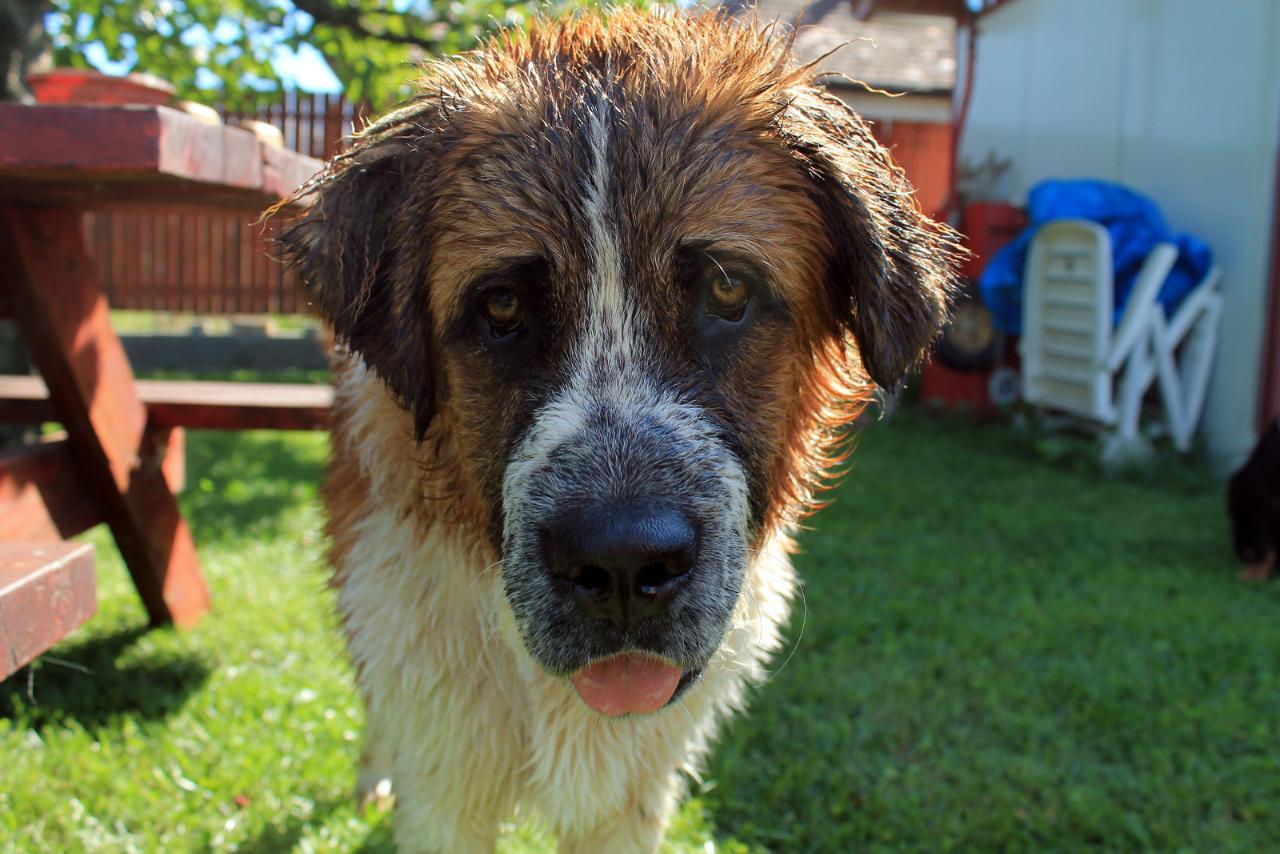
The impressive build of the Moscow watchdogs makes them not the most convenient pets for apartment owners, although some dog lovers make such sacrifices. The optimal housing for shaggy giants will be a spacious cottage or a specially equipped aviary in the courtyard of a private house. Having warm two-layer “fur coats” MCs are well adapted to Russian winters and are quite capable of surviving them in a wooden insulated booth. Usually the dog’s “hut” is positioned in such a way that the animal has a good view of the territory. If it is planned to keep in an aviary, then the latter should be equipped with a roof, under which the dog will hide from the heat and bad weather.
Separately, it should be said about the breeding females Aviaries for expectant mothers need to be built with a margin since the Moscow watchdog is a prolific breed. In addition, it will be necessary to equip a puppy shed, which will be both a “maternity hospital” and a “kindergarten” for future offspring. If the pet lives in a cottage or apartment, find a secluded, bright corner for its bed, protected from drafts and direct sunlight.
Having settled the Moscow watchdog in a house or apartment, stock up on combs, combs, and furminator, because the dog will shed twice a year. You do not need to have super-intuition to guess that there will be a lot of wool from this breed (dimensions oblige), therefore, from the first months of life, teach puppies to daily combing. A properly raised kid should not shy away at the sight of a brush and a slicker or grumble with displeasure at the owner.
In the period between molting, “Muscovites” are also combed daily, as their hair often falls off. In case of an acute shortage of time, it is not forbidden to skip the procedure, unless, of course, the dog’s “fur coat” is in a state of neglect, and twigs, leaves, and other debris have not become entangled in it after a walk. Do not get carried away with too frequent bathing of your pet if he lives in the yard. Enough 3-4 bath days a year. Apartment residents are washed more often, which is more likely due to the desire of the owner to keep the house clean than necessary.
Once a week, the Moscow watchdog’s ears are examined and cleaned with a damp cloth or napkin. If traces of nitrous oxide are found in the dog’s eyes, they can be removed with a soft cloth soaked in chilled tea infusion. It is better to trim the claws of the Moscow sentry as needed (usually once a month), but this is an option for animals with a low level of physical activity. In MS, who walk well and a lot, the claw plate is ground off naturally.
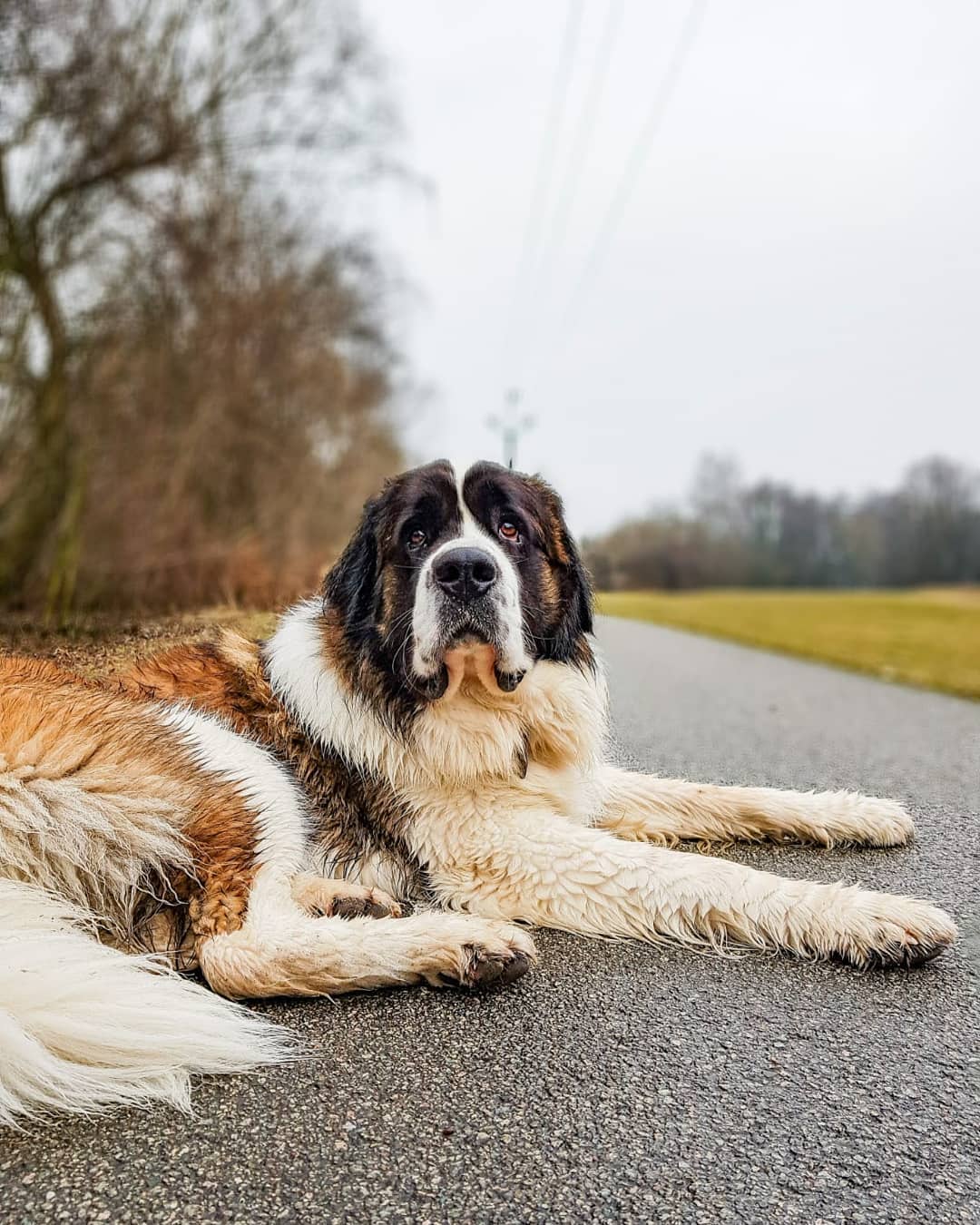
The clumsiness and burdensomeness of the Moscow watchdogs are apparent. In fact, representatives of this breed are much more active than their ancestors – St. Bernards, so, alas, it will not work to put them in an aviary and enjoy a quiet life. Especially the owners of apartment individuals, who suffer most from physical inactivity, will have to strain themselves. Such “Muscovites” will have to walk for at least 4 hours a day, interspersed with regular promenades with active games. Two hours and a half walk a day will be enough for aviary inhabitants, but this is provided that the animal moves freely around the territory of the aviary or personal plot. Keeping the Moscow watchdog on the chain is considered unacceptable.
Important: puppies of the Moscow watchdog are allowed to walk only after two complex vaccinations. Until one year old, the baby is not loaded with long hikes and energy-consuming games, thus allowing the pet’s joints to get stronger.
The standard menu of the Moscow watchdog is lean meat or its trimmings, offal, cereals (buckwheat, rice, oatmeal, millet), and vegetables. Sour milk and saltwater fish such as navigate and cod should also be present in the dog’s diet. It is useful to start introducing two-month-old puppies to the taste of vegetables. For this purpose, pumpkin, cabbage, zucchini, tomatoes, potatoes, and beets are suitable, which are given to babies in a slightly stewed form with the addition of unrefined vegetable oil. By the way, puppies of the Moscow guard dog are prone to food allergies, so each new product is introduced into the baby’s diet with extreme caution and in small doses.
Should be avoided:
- mushrooms;
- beans, peas, and any other legumes;
- chocolate, sweets, and confectionery;
- pasta and baked goods;
- chicken bones;
- river fish;
- spicy, spicy, and salty dishes.
Moscow Watchdog that consumes only natural food should be additionally given vitamin and mineral complexes and supplements with chondroitin and glucosamine, which are indispensable for joints. If you plan to keep your four-footed friend on an industrial “drying”, choose varieties designed specifically for giant breeds, and it does not have to be economy class food.
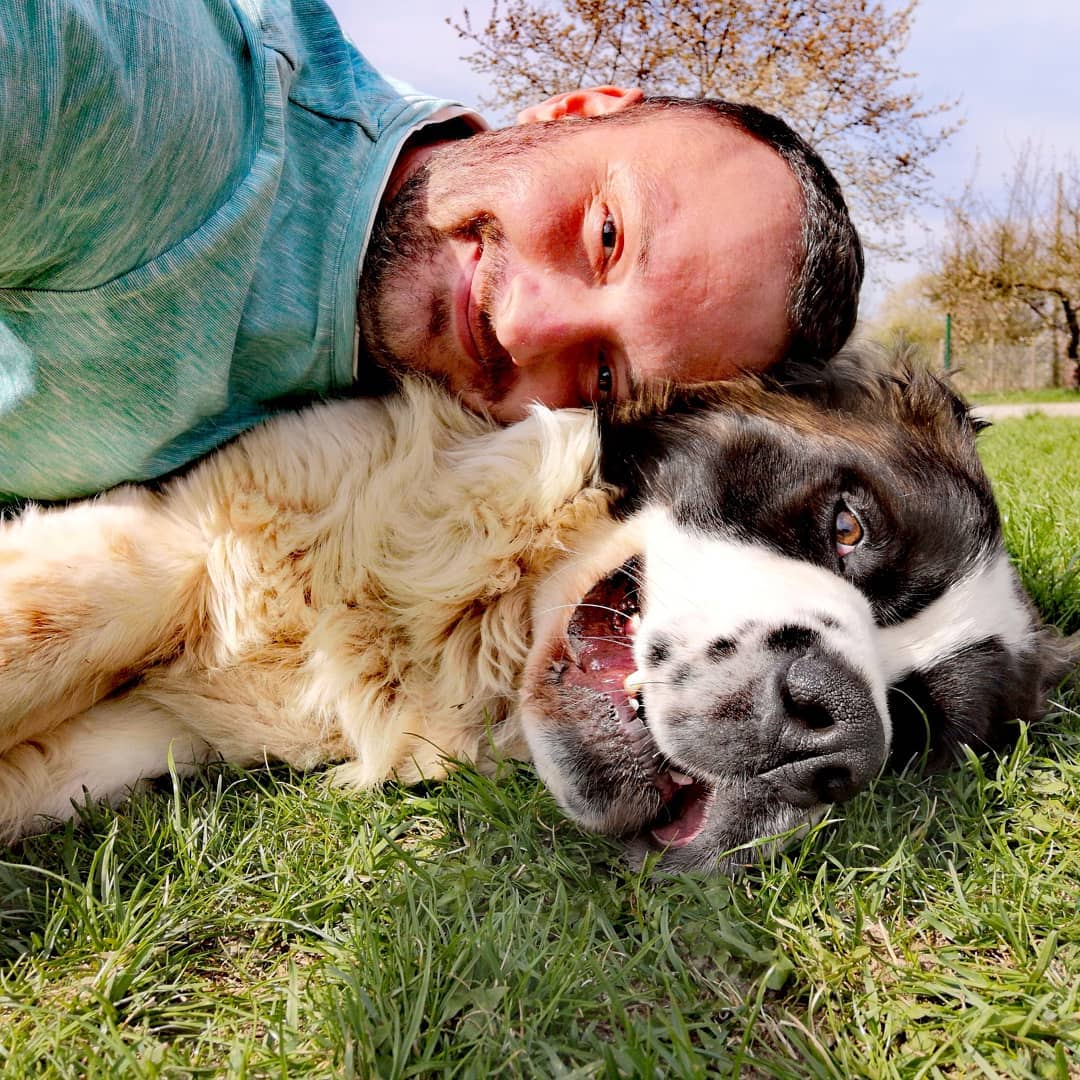
The scourge of all dogs of large breeds – dysplasia of the hip joints – did not pass by the Moscow watchmen. The disease is almost always genetically determined and often manifests itself after 4 or more generations, so it is extremely difficult to predict the possibility of its occurrence in puppies, even from X-ray images. And yet, even though it is impossible to completely overcome this unpleasant diagnosis, it is quite possible to teach a pet to live with it. The main thing is not to restrict the animal in moderate physical activity and not to allow it to gain excess weight. By the way, about weight indicators: “Muscovites” who are fed, not following the established norms, and indulge in sweets, swim with fat in a matter of months. You can deal with the problem with all the same physical activity and a therapeutic diet. But the breed’s predisposition to allergies is not cured of the word at all, although veterinarians do not prohibit suppressing outbreaks of the disease with antihistamines.
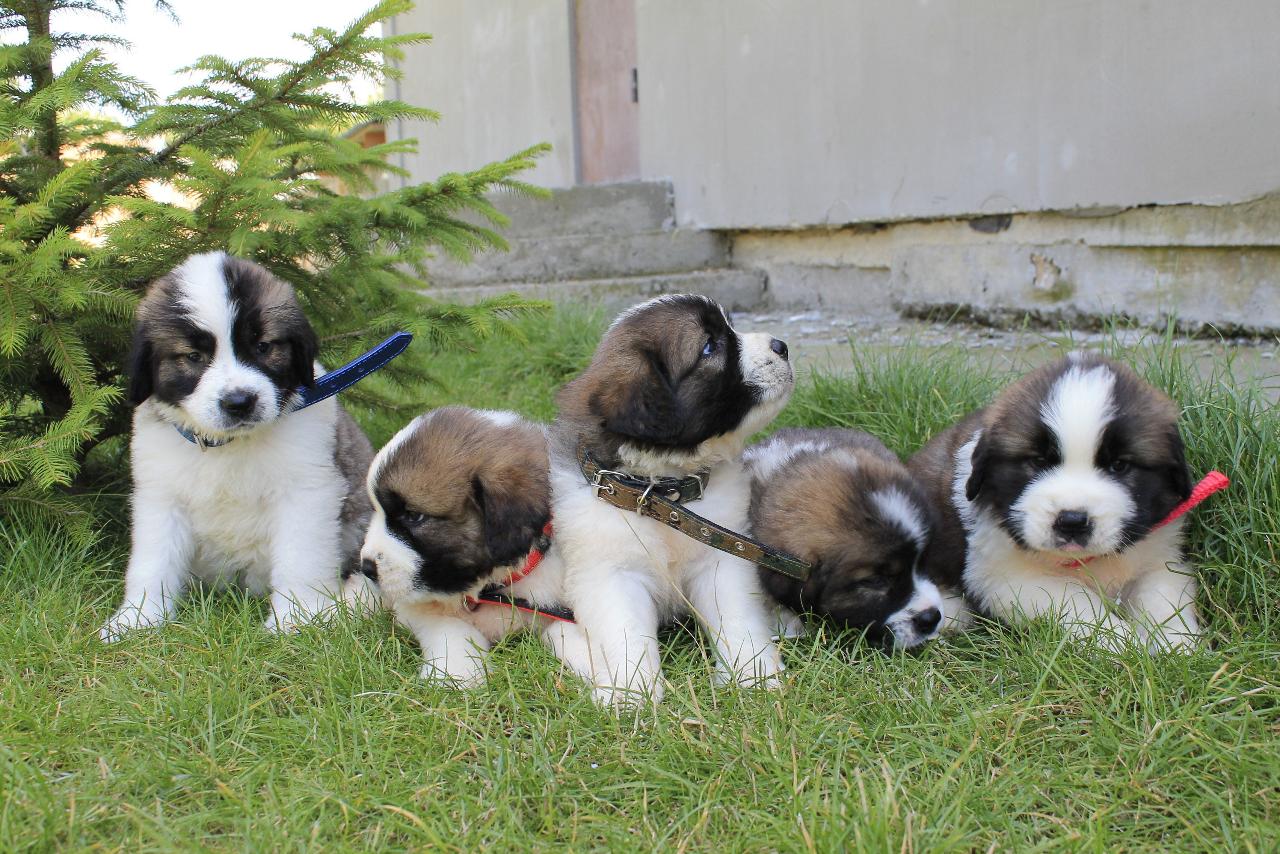
How to choose a puppy?
- The optimal age for moving a Moscow watchdog puppy to your home is 7 weeks, but it is better to get to know the pet early so that you can track its development, as well as changes in behavior and character.
- Visit your baby’s mom and gauge her reaction to your intrusion into her territory. If the female shows shyness and cowardice, it is likely that the offspring will also inherit these qualities.
- From lively, outgoing puppies, leaders grow who, with proper training, turn into harsh bodyguards. For those who do not plan to acquire a shaggy dominant, it is better to take a closer look at more modest and softer babies, which make good family pets and responsible guardians of property.
- Do not grab onto the largest puppy in the litter. A large weight is an extra load on the ligaments and joints, which are not the strongest among the Moscow sentries. The optimal weight for a month-old puppy is 3.5 kg (if the litter is large) or 4.5 kg (in a small litter).
- Examine your pet’s belly. It should be moderately warm, elastic, and free of traces of umbilical hernia.
- Ask the breeder how many siblings your puppy originally had. It’s great if the female has 6 or fewer tails. If there were more babies, they most likely did not have enough mother’s milk.

